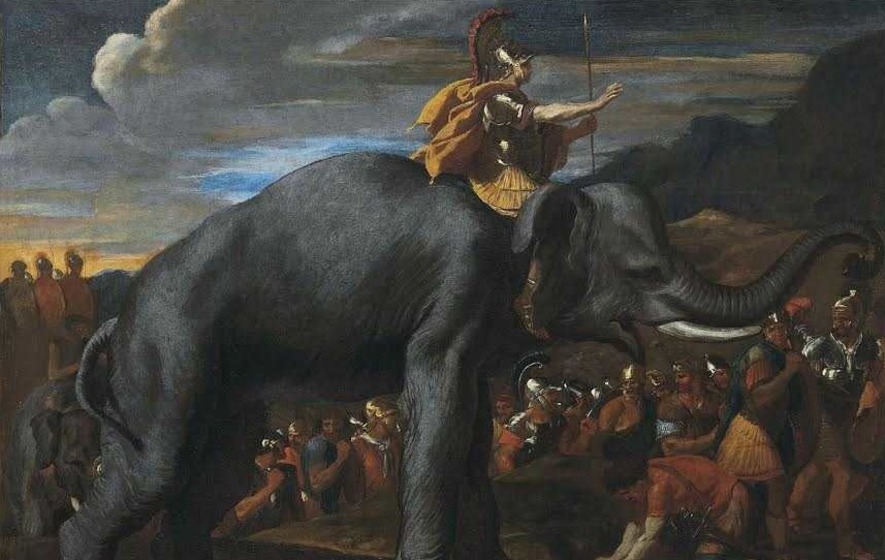
Scientists at Queen’s University in Belfast may have gotten to the bottom of a 2,000-year-old mystery that has plagued historians.
Where did Hannibal cross the Alps with his 30,000 men, 37 elephants, 15,000 horses and mules to defeat the Romans?
The answer to the riddle may lie in the shape of a 2000-year-old elephant dung.

BYPASS THE CENSORS
Sign up to get unfiltered news delivered straight to your inbox.
You can unsubscribe any time. By subscribing you agree to our Terms of Use
Latest Video
Belfast Telegraph reports:
Microbiologists from Queen’s University are part of a team that has found traces of faeces in earth taken from a site in France and have established it dates back to 218 BC – the time when Hannibal and his troops were making their way through the region.
It is an incredible breakthrough that could bring to an end 2,000 years of furious debate by historians, statesmen and academics.
Dr Chris Allen, from the Institute for Global Food Security at Queen’s, explained: “It is very exciting. It is one of those questions – an enigma if you like – that has been around for an awful lot of time and that no one has been able to find the answer to.”
“For example, at one point people thought they had found some elephants at one of the places where Hannibal may have been, but it turned out to be much older than that – it was actually a woolly mammoth,” Dr Allen added.
“This is the very first solid scientific evidence because we have found specific DNA sequences linked to the exact date he went across the Alps.”
The team at Queen’s have been working with other experts from countries including the Republic of Ireland, Canada, USA, France and Estonia.
They travelled to a national park in France to an area that is one of the possible routes taken by Hannibal – the Col de Traversette pass.
This crossing point was first proposed over a half century ago by the biologist and polymath Sir Gavin de Beer, but has not previously been widely accepted among members of the academic community.

The team narrowed down the search location by analysing soil samples that revealed the location of water in the area. It also showed signs of a large footfall by thousands of animals and humans at some point in the past.
“We knew that if Hannibal had passed through they would have stopped here for water for the animals,” explained Dr Allen.
The team then extracted tiny amounts of soil from the scene and tested it for the presence of microbes called Clostridia.
They are found in the faeces of humans and animals, including horses and elephants, and can survive for thousands of years.
Dr Allen said: “It has been estimated they will survive for about 8,000 years in soil.
“We are now conducting more research to show with an even greater degree of certainty that this is the route taken by Hannibal.”
This will include genetic testing to work out whether the Clostridia came from humans, horses or elephants.
“If it turns out that it came from elephants, that would really then be the smoking gun,” said Dr Allen.
“We’re actually working with a scientist who can look at parasite eggs under a microscope and identify whether it came from an elephant or horse.
“We’ve found one parasite egg so far, and tests on that could take just weeks or months, so we will hopefully have a lot more data by the end of this year.
“It’s very exciting. It’s a very good example of how you can use modern biological sciences to answer very old questions.”


